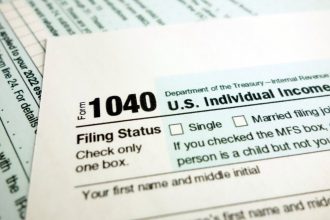Passive income and portfolio income are types of income that involve little time or effort. They are considered unearned income (as opposed to earned income from a job) but are still generally subject to taxes.
Passive income includes income from things like a rental property or limited partnership, or royalties from a creative project. Portfolio income is money generated from investments such as stocks, bonds and bank accounts.
Here’s how passive and portfolio income are taxed and how you may be able to generate tax-free cash flow in some situations.
Passive income vs. portfolio income: How they differ
Passive income and portfolio income are similar in that they both involve little effort to generate income. The big difference is that portfolio income tends to come from investments. In either case, the income is generally taxable.
Types of passive income
- Rental income
- Royalties
- Income from limited partnerships
- Alimony and child support
- Unemployment benefits
- Worker’s compensation
- Social Security benefits
Type of portfolio income
Even if you don’t receive a Form 1099 reporting the earnings for an account, perhaps because the earnings were too low, you’re still liable for paying taxes on that income. For example, banks will typically not report interest income that’s less than $10, though the account holder still owes taxes on the earnings.
What tax rate will I pay on passive income?
The tax rate that you’ll pay on passive income depends heavily on the specific kind of income and, sometimes, how long you’ve held the asset.
Taxes on rental income
Income from a rental property is generally considered ordinary income and subject to both federal and state taxes, unless your state has no income tax. The exact rate depends on your total income and tax bracket. You can deduct some expenses related to that rental property, such as mortgage interest, property taxes, operating expenses and repairs.
If you’re a real estate professional, rental income is considered active income, allowing you to take advantage of certain deductions, such as income losses from rental real estate. Real estate professionals may also be able to avoid the net investment income tax of 3.8 percent.
Taxes on royalties
Royalties are income from things like copyrights, patents, oil, gas and minerals. They are taxed at ordinary income rates.
Taxes on limited partnership income
Partners in a limited partnership are subject to taxes on their proportional ownership in the firm and its income. They’re taxed at ordinary income rates and aren’t subject to self-employment tax because the IRS considers limited partners as passive participants in the business.
Investors in a master limited partnership (MLP) may also enjoy the benefit of long-term capital gains treatment on their holdings.
Taxes on alimony and child support
Child support is not subject to federal taxes, while the tax treatment on alimony depends on a few factors, importantly the date of the agreement.
A separation agreement that was executed on or before Dec. 31, 2018 is treated as taxable to the recipient at ordinary tax rates and is generally deductible by the payor.
Agreements after this date are generally not taxable to the recipient and not deductible by the payor. Even agreements executed before this date but subsequently modified may also take the same tax treatment as those originally executed after the Dec. 31, 2018 deadline.
Taxes on unemployment benefits
Unemployment benefits are generally taxable at the federal level and are assessed at ordinary tax rates. Some states tax unemployment benefits, though others may partially tax the benefits or not tax them at all.
Taxes on worker’s compensation
Income from worker’s compensation is generally not taxable.
Taxes on Social Security income
Social Security benefits are generally taxable, though portions of the income may avoid taxes, depending on the recipient’s overall income.
Social Security recipients may avoid taxes on their whole benefit, or pay taxes on just 50 percent or 85 percent of their benefit. The exact level depends on their “combined income,” which is a special calculation that is detailed here.
What tax rate will I pay on portfolio income?
The tax rate depends on the type of income and, sometimes, on how long you’ve held the asset.
Taxes on dividend income
There are two types of dividends when it comes to taxes: ordinary and qualified.
Qualified dividends can be taxed at a 0, 15 or 20 percent rate, depending on your tax bracket – substantially less than the rates paid for ordinary income. The stock must be held for at least 60 days out of a 121-day period that begins 60 days before the security trades ex-dividend. Some stocks do not qualify for this treatment, such as real estate investment trusts (REITs).
Dividends that don’t meet the standards for qualified dividends are treated as ordinary income and are generally taxed at ordinary tax rates. Notably, even payouts from stocks that otherwise would be treated as qualified can be taxed at ordinary rates if the holding period is not met.
Dividends from preferred stock
Dividends from preferred stock may be treated either as ordinary income or at the special rate for qualified dividends. The treatment depends on whether the specific preferred stock meets the standards for qualified dividends (see above), though many don’t.
Taxes on interest from a bank account or bonds
Taxes on interest from bank accounts and most bonds (corporate, Treasury) are assessed at ordinary tax rates and are due when you file your income taxes for that year. Municipal bonds are an exception: They are generally exempt from taxes.
Taxes on capital gains
Capital gains are the profit you make when you sell assets such as stocks, cryptocurrency, investment funds and bonds. They can be treated in two major ways depending on how long you’ve held the asset. The tax rate is also determined by your total taxable income.
- Capital gains on assets held for less than a year are taxed as short-term gains at ordinary income rates.
- Capital gains on assets held for more than a year are taxed as long-term gains and enjoy special rates, either 0, 15 or 20 percent, depending on total taxable income.
Taxes on capital gains from real estate
When you sell your home, the profit you make is considered a capital gain. Real estate may enjoy an especially attractive tax rate, depending on a few factors.
You can avoid taxes on the first $250,000 in profits from the sale of your main home if you are filing as an individual or on the first $500,000 in profits if you are married and filing jointly. To get this highly favorable treatment, you’ll need to own the home and live in it for 24 months of the five years leading up to the sale. And you can only take advantage of this benefit once every two years.
In other cases, such as for investment real estate, you’ll be taxed at the applicable capital gains rates, unless you’re able to use another tax-saving maneuver such as a 1031 exchange.
Also, investment real estate is subject to an additional tax on any depreciation taken during your ownership of the property. That is taxed at the owner’s ordinary tax rate but capped at 25 percent.
Taxes on collectibles
Collectibles are items such as art, NFTs, antiques, gems, stamps, coins, wine, shoes, handbags, etc. They are considered alternative investments and are taxed at long-term capital gains tax rates up to 28 percent.
How to get tax-free passive income
Tax-free passive and portfolio income is a possibility, but you’ll need to abide by a few important restrictions to make this dream a reality.
Income inside a retirement account
You can earn income inside a retirement account such as a 401(k) or IRA, and defer taxes until you withdraw any money from the account.
When you make withdrawals, such as at retirement, you’ll be taxed at whatever your ordinary income tax rate is at that time.
If you want to eliminate taxes entirely, you can use the Roth 401(k) or Roth IRA. You’ll be able to avoid taxes on dividends and capital gains in the accounts, meaning your money will compound faster. At retirement, starting at age 59 ½, you won’t owe taxes on any withdrawals you make from the account.
Cash flow from a rental property
A rental property can be an attractive option for those seeking cash flow without paying taxes on it. The tax code lets landlords deduct depreciation from their revenues as a cost of business, shielding some rent from tax. Of course, you’ll still owe tax on your net income from the property, but the depreciation protects some revenue, subject to the depreciation recapture noted above.
So you may wind up with a rental that’s generating cash flow but little taxable income.
Municipal bonds
Municipal bonds are issued by cities and states, and are generally free of federal taxes. They’re also free of state taxes if you live in the state where they’re issued. Because of this tax status, “munis” typically pay lower rates than taxable bonds.
While tax-free passive income may sound great, you might make more overall if you purchased taxable bonds and simply paid the tax. So you’ll want to calculate the tax-equivalent yield on muni bonds to see if they really do make sense for you. Munis are best in high-tax cities and states.
0 percent capital gains rate
If you have the right mix of assets and income, you can also take advantage of the 0 percent rates mentioned above and enjoy no taxes on a six-figure income. This strategy involves careful use of the tax rules on dividends, capital gains and ordinary income.
Bottom line
Passively generated income is usually taxable unless it’s in a special tax-advantaged account such as a 401(k), IRA or other such account. However, even though it’s taxable, passive and portfolio income may be subject to more favorable tax rates than regular earned income from a job.
Editorial Disclaimer: All investors are advised to conduct their own independent research into investment strategies before making an investment decision. In addition, investors are advised that past investment product performance is no guarantee of future price appreciation.
Read the full article here














